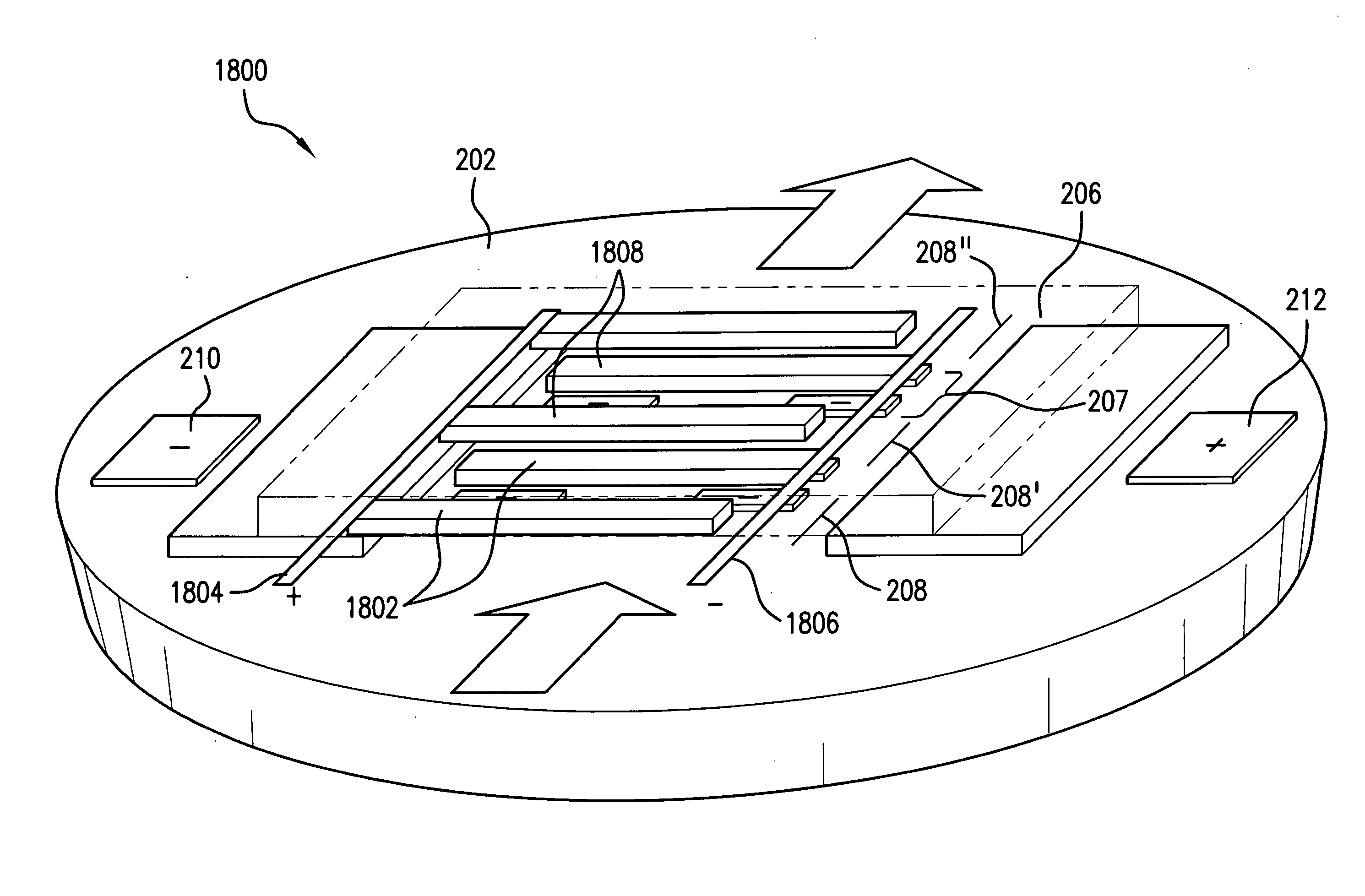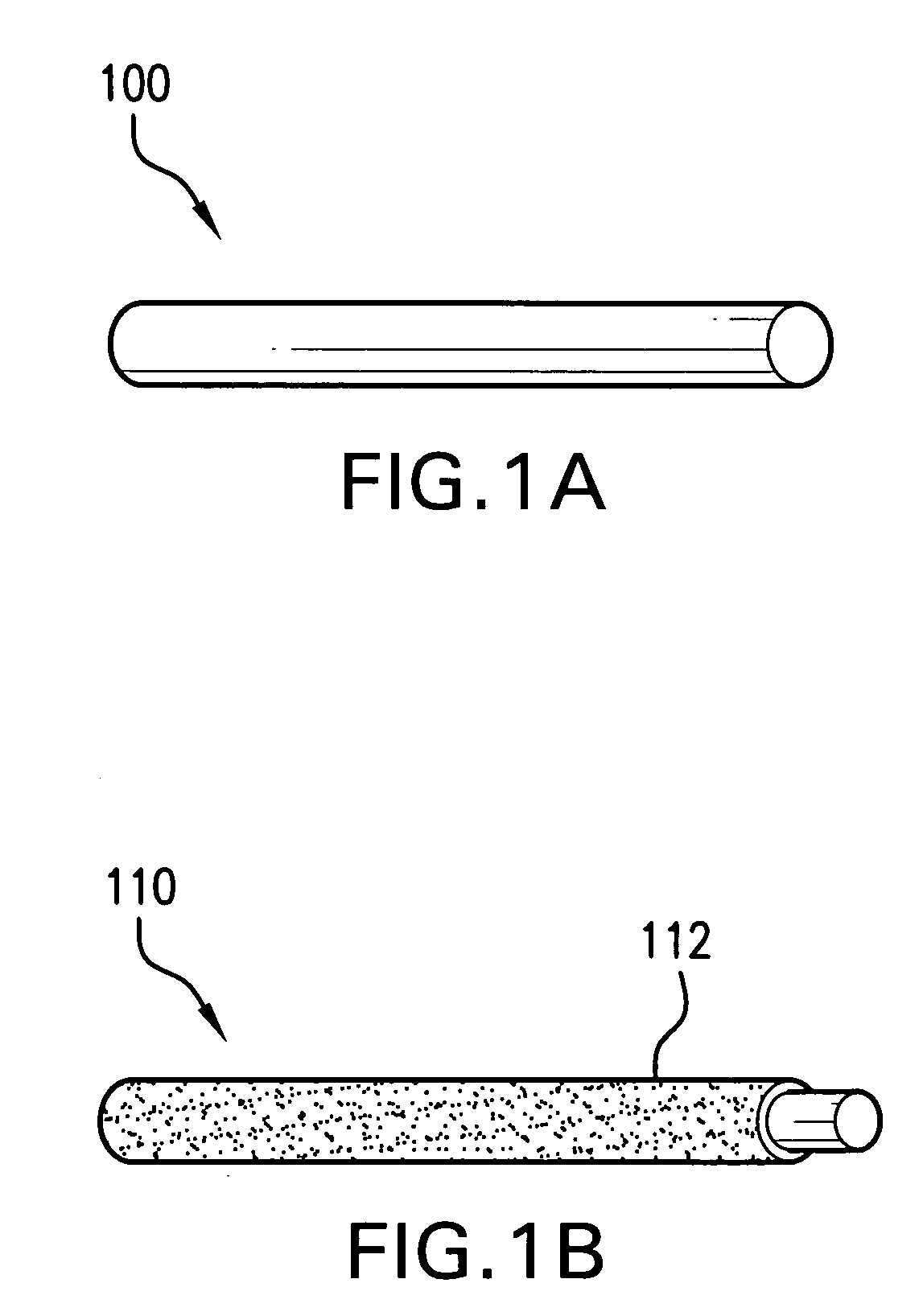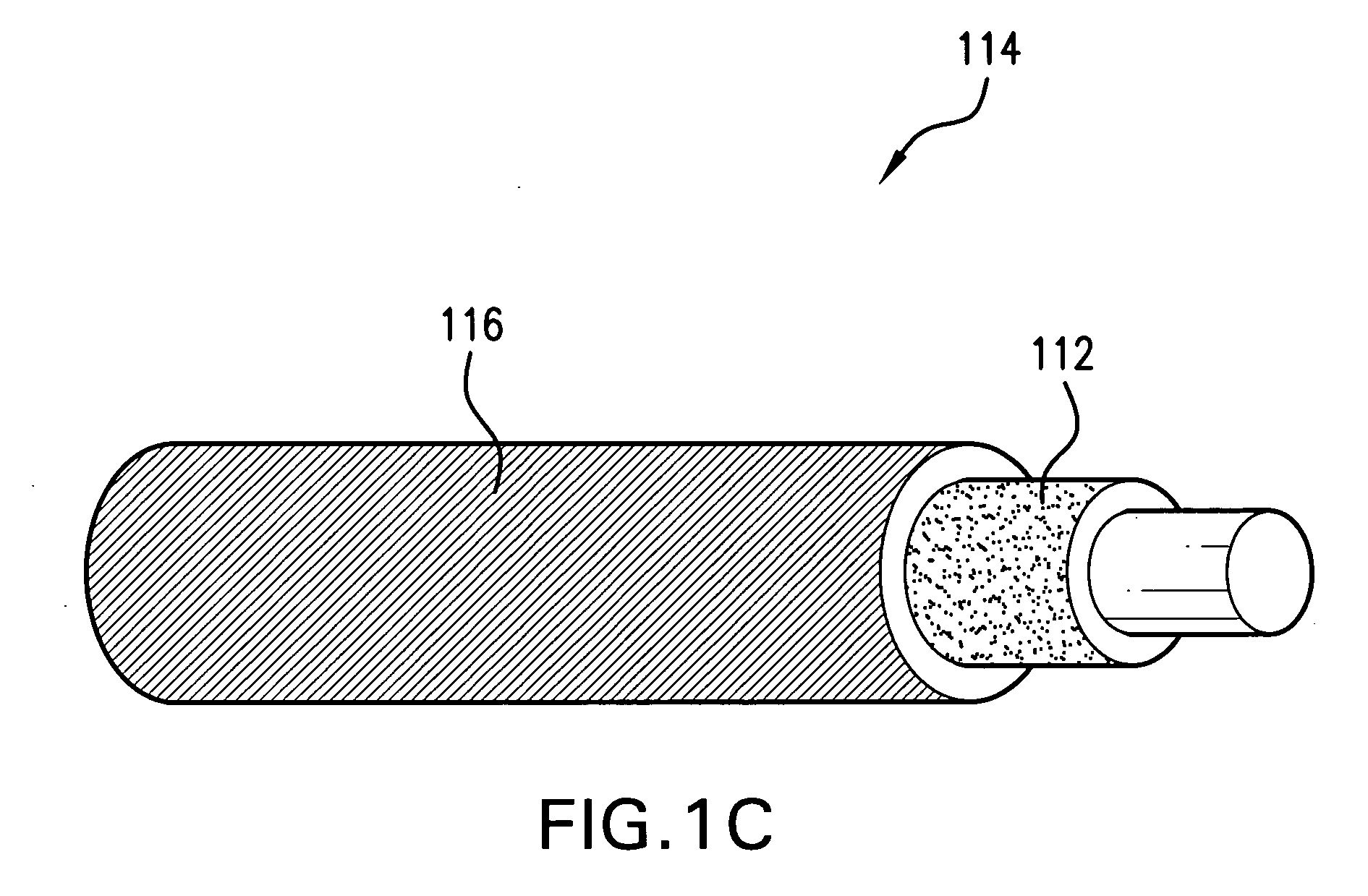Methods for nanowire alignment and deposition
- Summary
- Abstract
- Description
- Claims
- Application Information
AI Technical Summary
Benefits of technology
Problems solved by technology
Method used
Image
Examples
example 1
Positioning of Nanowires
[0222]As represented in FIGS. 2 and 14a, flow channel 206 is initially filled with solvent (IPA) 1402 and subsequently with nanowire (NW) ink 1404 of a desired concentration. After introduction of a uniform film of NW ink over the wafer surface 202 the electric field is applied to the electrode (204, 205, 207) pattern. E-field parameters were about f=500 Hz and V=1 Vpp. The NWs subject to these conditions are observed to be captured / associated from suspension onto the electrodes with their long axis parallel to the electric field direction. The association can occur with the NWs pre-aligned in a fluid flow or pulled non-aligned from a stationary suspension. The NWs are observed to align adjacent to each other and exhibit a mobility along the electrode bars. This state of NW capture is referred to as weak NW “pinning” or association 1406 and is illustrated in FIGS. 5 and 8a. The mobility can be used to achieve a uniform high packing density of NWs per unit ele...
example 2
Nanowire Coupling with CNOS Nanowires
[0223]Nanowires comprising a CNOS composition (Si core), with a TaAlN outermost shell, were prepared utilizing standard growth an harvesting techniques (see e.g., Gudiksen et al (2000) “Diameter-selective synthesis of semiconductor nanowires” J. Am. Chem. Soc. 122, 8801-8802; Cui et al. (2001), “Diameter-controlled synthesis of single-crystal silicon nanowires” Appl. Phys. Lett. 78, 2214-2216; Gudiksen et al. (2001), and “Synthetic control of the diameter and length of single crystal semiconductor nanowires” J. Phys. Chem. B 105, 4062-4064). Nanowires were about 22 microns in length and about 100 nm in diameter. Suspensions of nanowires at both moderate density and low density (10-fold dilution of moderate density suspension) were prepared in isopropanol (IPA).
[0224]A 500 micron thick, 4 inch diameter quartz substrate was patterned with a plurality of Moly (Mo) electrodes, each of which was approximately 400 Å thick, and about 15 microns or about...
example 3
Nanowire Coupling on 10×10 Array
[0228]Nanowires comprising a CNOS composition (Si core), with a TaAlN outermost shell, were prepared utilizing standard growth an harvesting techniques (see e.g., Gudiksen et al (2000) “Diameter-selective synthesis of semiconductor nanowires” J. Am. Chem. Soc. 122, 8801-8802; Cui et al. (2001), “Diameter-controlled synthesis of single-crystal silicon nanowires” Appl. Phys. Lett. 78, 2214-2216; Gudiksen et al. (2001), and “Synthetic control of the diameter and length of single crystal semiconductor nanowires” J. Phys. Chem. B 105, 4062-4064). Nanowires were about 22 microns in length and about 100 nm in diameter. Suspensions of nanowires at both moderate density and low density (10-fold dilution of moderate density suspension) were prepared in isopropanol (IPA).
[0229]A 500 micron thick, 4 inch diameter quartz substrate was patterned with a 10×10 array of Moly (Mo) electrode pairs (i.e., 100 total electrode pairs, 200 total electrodes), each of which wa...
PUM
 Login to View More
Login to View More Abstract
Description
Claims
Application Information
 Login to View More
Login to View More - R&D Engineer
- R&D Manager
- IP Professional
- Industry Leading Data Capabilities
- Powerful AI technology
- Patent DNA Extraction
Browse by: Latest US Patents, China's latest patents, Technical Efficacy Thesaurus, Application Domain, Technology Topic, Popular Technical Reports.
© 2024 PatSnap. All rights reserved.Legal|Privacy policy|Modern Slavery Act Transparency Statement|Sitemap|About US| Contact US: help@patsnap.com










